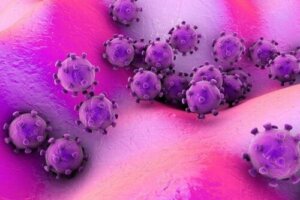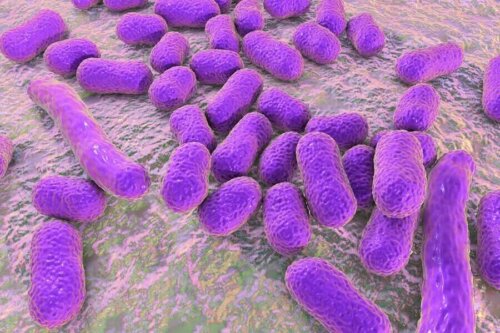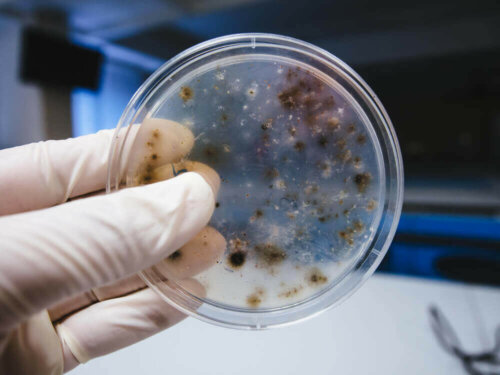What Are Germs and Where Are They Found?


Written and verified by the biologist Samuel Antonio Sánchez Amador
Have you ever wondered what germs are?
The word “germ” has different meanings depending on the context in which it’s used. In biology, it’s defined as the reproductive part of a plant that germinates to grow, for example. Therefore, a germ is metaphorically known as the initiator of something, like a movement.
In this article, we’ll take a closer look at what germs are and where they’re found. Keep reading if you want to know more about this fascinating microscopic world!
What are germs?
We define this term as any microorganism capable of producing disease or damaging its host, be it of animal or plant origin. Overall, there are four main types of germs that we’ll detail below.
Bacteria
Bacteria are prokaryotic (ie, single-celled) organisms, which are a few microns in size and come in different shapes.
According to the Earth Microbiome Project, they estimate that there are more than a trillion species of bacteria on the planet, so we’re not exaggerating when we say that they’re the essential foundation of every ecosystem. Depending on their morphology, they can be divided into several types:
- Cocci are spherical in shape and depending on the number of individuals that make up the structure (diplococci, tetracocci, and streptococci).
- Bacilli are rod-shaped.
- Helical forms are vibrios, spirils, and spirochetes.
Bacteria can be immobile or have motor skills, either through cilia or flagella that help them move. Depending on their detection method, based on the nature of the outer wall of their structure, they can be gram-negative or gram-positive. These microorganisms can be free-living or pathogens of living beings, including humans.
Under the strict definition of the term, only bacteria that cause diseases are considered germs.

Virus
Viruses are even smaller than bacteria and simpler than bacteria. These germs consist of DNA or RNA chains (single or multiple of them) covered by a protein layer that gives them their three-dimensional shape.
Scientists have described around 5000 virus species, and they can’t reproduce without a host to invade. Viruses hijack the cells of the patient and their machinery, self-replicating within them to continue spreading the disease in the population.
You might also be interested in: How Viruses Evolve: The Race is On
Fungi, protozoa, and others
In order to keep this space as concise and informative as possible, we’ll summarize the rest of the germs or pathogens below:
- Protozoa are unicellular microorganisms like bacteria, but they differ from them due to their greater size and morphological complexity. They live in humid environments and can be parasites or free-living. A very clear example is the protozoan that causes malaria.
- Fungi, unlike those named in the previous point, are a taxon of complex multicellular organisms, among which are molds, yeasts, and mushroom producers. Some fungi can infect both animals and plants, forming a mycelium in the affected tissues and feeding on them.
- There are also other germs that are more difficult to describe, such as viroids or prions. These are RNA molecules that can infect animals or plants.

Learn more: The Causes and Symptoms of Athlete’s Foot and How to Treat it at Home
Where can you find the most germs?
The better question would be what part of the earth is free of them. Microorganisms dominate all environments, and they surround us at all times (and are even found within us!).
But, since in the strict sense of the word a germ is pathogenic for other living beings, it’s important to talk about their prevalence in certain public places:
- Pools and water parks. Here they all come together. Protozoa and fungi require moisture, and viruses need high host density. Any humid and crowded place is a good breeding ground for colonies of germs.
- Money, grocery carts, surfaces in public restrooms, etc. Many viruses and bacteria remain on surfaces for a certain amount of time, so the more people who are in contact with an object, the more likely it is to have a high germ load.
- The human body itself. Although it may seem surprising, one to two kilos (2-4 pounds) of our body weight comes from bacteria, which are present mainly in our intestinal tract. Yes, these don’t fall within the definition of germ, since they aren’t pathogenic for us. Even so, the human being presents high viral loads when suffering from an illness, such as the flu or colds.
As we’ve seen, the definition of germs falls short when it comes to encompassing the multiple microorganisms that generate disease in living beings. However, they all have something in common: They’re microscopic beings that take advantage of the existence of others to survive, causing various diseases in their hosts.
All cited sources were thoroughly reviewed by our team to ensure their quality, reliability, currency, and validity. The bibliography of this article was considered reliable and of academic or scientific accuracy.
- Broniatowski DA, Klein EY, Reyna VF. Germs are germs, and why not take a risk? Patients’ expectations for prescribing antibiotics in an inner-city emergency department. Med Decis Making. 2015;35(1):60‐67. doi:10.1177/0272989X14553472
-
National Research Council (US) Committee to Update Science, Medicine, and Animals. Science, Medicine, and Animals. Washington (DC): National Academies Press (US); 2004. A Theory of Germs. Available from: https://www.ncbi.nlm.nih.gov/books/NBK24649/
-
InformedHealth.org [Internet]. Cologne, Germany: Institute for Quality and Efficiency in Health Care (IQWiG); 2006-. What are microbes? 2010 Oct 6 [Updated 2019 Aug 29]. Available from: https://www.ncbi.nlm.nih.gov/books/NBK279387/
This text is provided for informational purposes only and does not replace consultation with a professional. If in doubt, consult your specialist.








